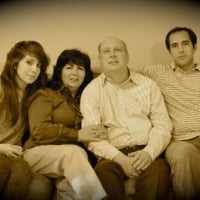What is the indication of a first letter or number in a PIN?
Answers
-
If you mean the PID (the identifying code for a person's profile in the tree), those are randomly generated when the profile is created. If the family was created all at the same time, the PIDs may share several characters.
3 -
doesnt signify anything if you are referring to PID.
2 -
I know when the PID numbering started it was indicated that names submitted before 2012, and were members of the Church, their PID's would start with a K and also an L. Is this correct information? We have been told that if at all possible, when merging, to try to keep the name with the K as the first letter in the PID. I would like to know if this is correct?
0 -
"We have been told that if at all possible when merging to try to keep the name with the K as the first letter in the PID"
I have never been told that before
and as far as the order in which you merge - I think FamilySearch takes care of any needed order of the merge by itself for you - we shouldnt have to remember something that the sysyetm can take care of for us. - but I have no reason to beleieve it is based on the first letter of the PID.3 -
I'm an L, my parents begin with L, my maternal great grandparents begin with L. My paternal great grandfather begins with K as does my paternal grandmother. None of us are LDS.
3 -
Answered on the duplicate:
0 -
when I started training 11 years ago to work at the family history library this was what we had read and been told. However it may not been whether you were a member of the church or not but whether your information had been submitted before 2012. This is when the records were brought over from new.family search to familysearch.org. The names were started with the K or the L. And that any names added Later on that were just extracted and manually entered began with a G M or 9. I would like to know the facts of this about the first letter.
0 -
I dont think "there are any facts"
I think its just a randomly generated number.3 -
Yes, in and of themselves the ID numbers are meaningless. I've just been working on a profile that my wife created from scratch in Family Tree in 2018 and its ID number begins with L. It was never in New Family Search. However her parents were imported from New Family Search in 2012. Her father's ID starts with K but her mother's ID starts with M.
The only reason to be concerned about the order of a merge, is that it is usually preferable to keep the ID with the largest Change Log so the history of the profile is more easily accessible. However, there are times when I have had to clean up profiles that were such a mess due to bad merges, wrong sources, and confusion between different people that I have purposely kept the profile with the shortest change log in order to try to hide the change log that was full of past errors.
You will occasionally run into situations where you are forced to merge in a specific direction. What I think I recall from an old question and answer session by Ron Tanner, a product manager at FamilySearch, is that that occurs when one of the profiles has so much information that if all that information had to be transferred from it to the surviving record, the merge process would crash. So that larger profile is forced to be the surviving record. It has nothing to do with the ID numbers.
3 -
Profile IDs are, effectively, chronological: the computer assigns the next available alphanumeric sequence, based on the timestamp of profile creation. It's seven characters, I believe using the digits 1 to 9 (no zero) and 21 letters (A to Z minus AEIOU). This means that for every starting character, there are 30*30*30*30*30*30 = 729,000,000 possible IDs. As of May, there were 1.60 billion profiles in the Tree (according to the newsroom page), which is a bit more than twice that. Factoring in all of the IDs that have been archived or retired (such as by merge-deletion), I figure there are another couple of billion IDs that are no longer available, despite not being in current use, so we should be on the 5th starting letter since 2012. K,L,9,M,G — yeah, that's about where we are, isn't it.
You'll notice, however, that the "next digit" is essentially random: how'd that 9 get in there, and how'd we get to G? So you can't sort a group of PIDs alphabetically and expect to have them be in chronological order — and even if they were, there'd be no value judgement attached by age. Sometimes, the legacy-data profile is good; sometimes, it's pure junk. And when a family needs to be assembled out of legacy-data twiglets, the exact or relative age of each bit is totally irrelevant.
5


